 Crime
Crime  Crime
Crime  Technology
Technology 10 Hilariously Over-Engineered Solutions to Simple Problems
 Miscellaneous
Miscellaneous 10 Ironic News Stories Straight out of an Alanis Morissette Song
 Politics
Politics 10 Lesser-Known Far-Right Groups of the 21st Century
 History
History Ten Revealing Facts about Daily Domestic Life in the Old West
 Weird Stuff
Weird Stuff 10 Everyday Products Surprisingly Made by Inmates
 Movies and TV
Movies and TV 10 Actors Dragged out of Retirement for One Key Role
 Creepy
Creepy 10 Lesser-Known Shapeshifter Legends from Around the World
 Animals
Animals 10 Amazing Animal Tales from the Ancient World
 Gaming
Gaming 10 Game Characters Everyone Hated Playing
 Crime
Crime 10 Terrifying Serial Killers from Centuries Ago
 Technology
Technology 10 Hilariously Over-Engineered Solutions to Simple Problems
 Miscellaneous
Miscellaneous 10 Ironic News Stories Straight out of an Alanis Morissette Song
Who's Behind Listverse?

Jamie Frater
Head Editor
Jamie founded Listverse due to an insatiable desire to share fascinating, obscure, and bizarre facts. He has been a guest speaker on numerous national radio and television stations and is a five time published author.
More About Us Politics
Politics 10 Lesser-Known Far-Right Groups of the 21st Century
 History
History Ten Revealing Facts about Daily Domestic Life in the Old West
 Weird Stuff
Weird Stuff 10 Everyday Products Surprisingly Made by Inmates
 Movies and TV
Movies and TV 10 Actors Dragged out of Retirement for One Key Role
 Creepy
Creepy 10 Lesser-Known Shapeshifter Legends from Around the World
 Animals
Animals 10 Amazing Animal Tales from the Ancient World
 Gaming
Gaming 10 Game Characters Everyone Hated Playing
10 Lesser-Known Cases Of People Who Tried To Achieve Immortality
For human beings, death has always been an experience as undesirable as it is inevitable. Regardless of any effort, everyone eventually ceases to exist. And such is the case that many more people have died throughout history than the number of those who live today.[1] But as much as this is a reality, not everyone thinks the same.
Some individuals have convinced themselves that in some way, at some point, they will be able to cheat death for good. So over the centuries, numerous people have sought ways to achieve immortality, whether through a weird drink or a scientific procedure. Let’s look at ten of those people, as well as their strange attempts to live forever.
10 Sima Pi
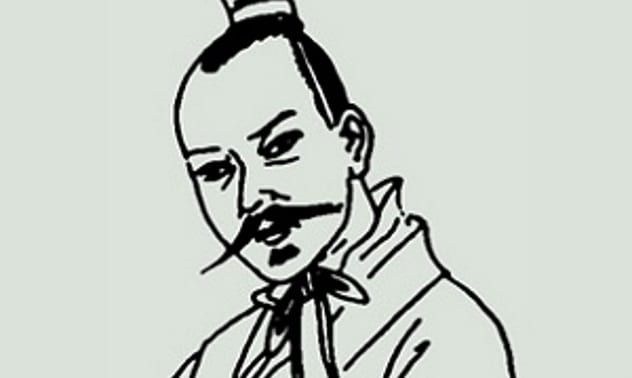
It is a well-known fact that the ancient Chinese emperors often developed a strong desire to live forever. Fearing that their lives would end abruptly and that their dynasties would disappear, these rulers were able to risk everything trying to achieve eternal youth. For example, the first emperor of China, Qin Shi Huang, believed that a mercury-based drink was the key to becoming immortal, so he consumed it regularly. But he was not the only case, and other emperors went even farther—too far, actually.
In AD 361, Emperor Mu of the Eastern Jin dynasty died without heirs, so his cousin Sima Pi became the new ruler, receiving the title of Emperor Ai. Sima Pi was a great believer in the Daoist spiritual philosophy, one of the oldest in the world, and that was when he began to obsess over the idea of immortality. So he had magicians develop a chemical formula that would give him eternal life. In 364, the magicians gave Sima Pi the result, the “pill of immortality,” and the emperor did not hesitate to ingest it.[2]
After taking the pill, Emperor Ai became seriously ill, so he had to leave his position as ruler after only three years on the throne. In a great irony, Sima Pi finally died in 365, at the young age of 24. His obsession with living eternally ended up killing him before his time. As he also died without leaving heirs to the throne, his brother Sima Yi became the new emperor of the Jin dynasty.
9 Shojin

Shingon is an esoteric doctrine within Buddhism, introduced in Japan in the ninth century. The founder of this cult is Kobo Daishi, a religious leader who died in 835. However, his followers say he did not die but rather that toward the end of his life, he entered a deep state of meditation in which he remains to this day, awaiting the coming of the next Buddha. What this man actually did is inspire a process called sokushinbutsu, an ancient practice of self-mummification with the presumed purpose of achieving immortality.
Two centuries later, a man named Shojin wanted to repeat the experience of Kobo Daishi and enter that state of eternal meditation. As he grew older, Shojin decided it was time to mummify himself alive. The process of self-mummification was long and painful. During a period of 1,000 days, the monk had to spend his time only meditating or feeding on the trees. And when we say “feeding on the trees,” we do not mean eating fruits or something like that; it involved eating roots and tree bark. This was done with the purpose of eliminating all body fat.
After this, the person had to drink a special tea for another 1,000 days. This tea was poisonous, and in addition to repelling parasites, it also contributed to the mummification of the monk while he was still alive. The truth is that once the ritual was completed in 1081, Shojin, aged 71, felt that the end of his life was near and then proceeded to bury himself alive to finish the sokushinbutsu.[3] However, when his disciples entered the tomb to see Shojin some time later, they found his body in a state of decomposition. According to tradition, this implied that the process failed, and the state of meditation was not achieved. So probably, Shojin was subjected to an exorcism, after which his body was reburied.
8 Unidentified Russian Men

During the first half of the 20th century, when the effects of radiation were still not well-understood, people often believed that radioactive materials could improve their health. Some time later, comics began to appear about superheroes who obtained their powers after being exposed to radiation. And even now, some people believe that radioactive waste can grant them eternal life. In fact, there are those who think that the following people in this item were influenced by the stories of Marvel Comics to do what they did.
In March 2013, the police in Moscow arrested a university professor for storing large amounts of radioactive material in his house. Then, the man’s confession baffled the authorities. It happens that a friend of the detainee believed that radiation could make him immortal.[4] So, on one occasion, the man traveled to Chernobyl to expose himself to radiation from the failed nuclear plant. Later, this friend asked the professor for help to get radioactive waste and thus complete his path to immortality.
The professor managed to store 14 kilograms (31 lb) of radioactive material in his home, including a radon battery and contaminated soil. In the end, and according to the detainee’s statements, he managed to use the material to expose his friend to radiation. Under the charge of illegal handling of nuclear materials, the professor could have faced a sentence of up to seven years in prison. Although the authorities did not give any personal information about the two involved, this shows that there can be many more anonymous people around the world trying something crazy to unlock infinite life.
7 Emperor Wenxuan

Here we have another Chinese emperor eager to obtain extreme longevity, Emperor Wenxuan. But unlike the aforementioned Emperor Ai, Wenxuan was more cautious and decided not to risk losing his life instead of gaining it. After several demonstrations of military strength, Wenxuan ascended to the throne in AD 550 and became the first emperor of the Northern Qi dynasty. Wenxuan seems to have been an unstable man, with strange and sometimes contradictory behavior. On the one hand, he was a vegetarian and even promoted laws to free animals from captivity. But on the other hand, Wenxuan was aggressive and bloodthirsty. Over the years, the emperor aggravated his problems with alcohol while enjoying the violence. Among his “feats,” Wenxuan came to the point of dismembering people and ordering the killing of children.
The biggest irony about Wenxuan is that the man was a believer in Buddhist doctrine, a philosophy mostly based on the principle of compassion. Among his beliefs, Wenxuan also wanted to achieve immortality at any cost. Once, he tested some men who called themselves “immortals” to see if they lived up to such a title. He challenged them to climb a high place, jump off the cliff, and fly through the skies as legendary immortals. As expected, all those who made the attempt died smashed into the ground.
On one occasion, Wenxuan ordered some teachers to prepare him gold cinnabar, an alchemical elixir that was believed to grant immortality. When the elixir was completed and delivered to the emperor, Wenxuan kept it in a jade box. According to his words, he enjoyed Earthly pleasures too much to risk dying and ascending to Heaven so soon.[5] So he decided to keep the elixir safe and take it only when he was near death.
6 James Schafer
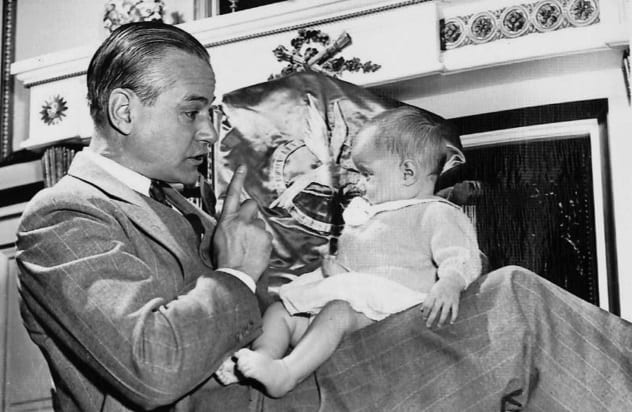
James Schafer was the leader of a religious cult founded by himself in the 1920s. This cult was described as a combination of numerous religious doctrines and attracted thousands of wealthy believers. Thanks to these people, Schafer managed to make a fortune and buy a 110-room mansion on Long Island, which he called “Peace Haven.” The mansion would become a second home for his closest followers. Among his many teachings, Schafer claimed that he could dematerialize anything in his path and that diseases were caused by “destructive thoughts.” This last thing is what leads to his inclusion in this list.
In 1939, the cult of James Schafer brought to Peace Haven a baby girl named Jean Gauntt. This girl was not legally adopted; her parents gave her to the organization because they were too poor to take care of her. Schafer’s intention was to raise baby Jean so that she would become immortal. And when she had grown enough, Jean would take control of the cult forever. To give immortality to the three-month-old baby, she was constantly monitored so as not to expose her to “destructive” activities.[6] She was to learn metaphysics and follow a strict vegetarian diet, and no one around her could mention negative ideas in her presence. Over time, Jean would also learn about the existence of death, although under the belief that it can be avoided.
Unfortunately for Schafer, his dream of raising an immortal girl did not last long. By 1940, the organization began to run out of money. So Schafer decided to return the girl to her parents, but not without giving them his immortality recipe for Jean, too. However, the girl’s parents immediately discarded his advice. Accused of fraud, Schafer was sentenced to five years in prison in 1942, and in 1955, he committed suicide.
5 Pope Innocent VIII
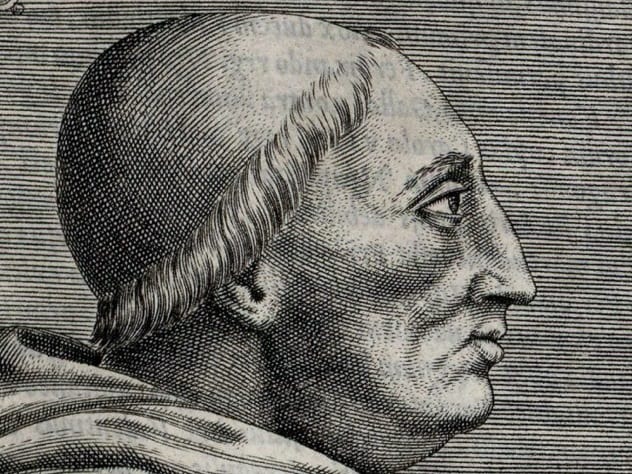
In an attempt to look younger, many people undergo a treatment in which they draw their own blood and inject it into their faces. But what people don’t usually do is ingest blood from younger people in order to gain their vitality. However, this was not always the case.
Giovanni Battista Cibo reached the peak of his ecclesiastical career when he became pope in 1484, and from the beginning, he was a pontiff involved in controversy. The newly named Pope Innocent VIII had at least two illegitimate children, was elected as the new pope under dubious circumstances, and received numerous criticisms for corruption cases.
But after a brief eight years of papal exercise, Innocent VIII began to fall ill and was not prepared to die. So he asked some physicians to help him, and they came up with a solution. The physicians brought three boys before the pope, and in exchange for a ducat (a gold coin), they agreed to give their blood to the pontiff.
As a rejuvenation technique, the physicians performed a blood transfusion to Innocent VIII, slowly draining the blood of the boys. Unfortunately, the three boys and the pope all ended up dying in the middle of the procedure. Shortly before his death, Innocent VIII asked his cardinals to choose a better successor than himself.[7] Hopefully, that would mean not taking liters of blood from some children to become immortal.
4 FM-2030
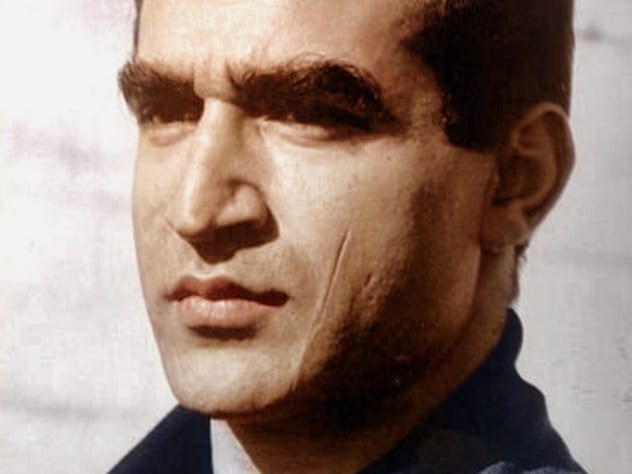
Cryonics is defined as a scientific technique in which a person’s body is frozen at extremely low temperatures. This procedure has the objective of preserving the individual for decades or centuries until science in the future can revive them. Cryopreserving a person involves filling the body with chemicals that prevent the formation of ice so that all organs—including the brain—remain intact in the extreme cold. The freezing of the human body without harmful formation of ice is a process known as vitrification.
Fereidoun M. Esfandiary was a futuristic visionary born in Belgium in 1930. During his early years, he moved through several European countries and studied at universities and colleges from England to Jerusalem. He even participated in the 1948 Olympic Games. But after moving to the United States in the 1950s, Esfandiary embraced his career as a writer and philosopher, speculating on the changes that human civilization would undergo in the future. He was a firm believer in transhumanism, the idea that with technology, humans will eventually solve all their problems, including death. This way of thinking gave him recognition and allowed him to work as a consultant and lecturer in many American institutions and universities.
That was when F.M. Esfandiary decided to change his name to FM-2030. The second part of his new name is the year in which he believed that humankind would finally achieve immortality. In addition, in 2030, he would be 100 years old. However, FM-2030 suffered an abrupt end in 2000, when he died of pancreatic cancer. But by that point, he had already devised a way to not miss the future. Quickly, the Alcor Life Extension Foundation took care of FM-2030 and cryopreserved his body—just his head, to be more specific.[8] Alcor is one of the leading cryonics companies in the world, with more than 160 people already frozen and another 1,500 clients who have not yet died. Among those frozen is FM-2030, waiting to wake up the day humans learn to live forever.
3 Alexander Bogdanov
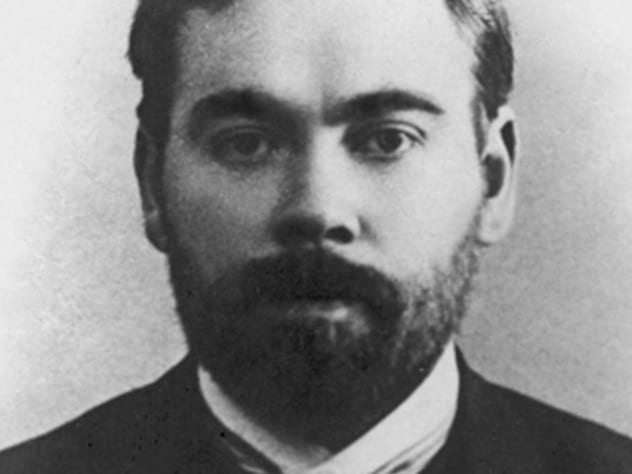
The infamous Pope Innocent VIII was not alone in believing that the blood of others is the key to eternal youth. Centuries later, another authority—this time a political one—would follow in his footsteps. Alexander Bogdanov was born in Russia in 1873 and became a respected Communist leader. However, some of his most extreme ideas got him a five-year exile. Bogdanov served as a doctor during World War I, and a few years later, he stopped prioritizing politics to devote himself to science.
Bogdanov spent time exploring the potential benefits of blood transfusions, a relatively new technique for his time. Among other things, the physician believed that blood transfusions could not only cure diseases but also extend a person’s life. With the support of the famous revolutionary Joseph Stalin, Bogdanov obtained his own institute of blood transfusions, a large building in Moscow, in 1926.
But about two years before that, Bogdanov had already begun to test the potential of blood to increase life expectancy indefinitely. Together with his wife, the scientist received more than ten blood transfusions from younger individuals. These people were generally supporters of Bogdanov’s theory and also wanted to extend their own lives. However, in 1928, things went really wrong for the physician.
Alexander proceeded to receive blood from a young man who had tuberculosis, although the former considered himself immune to the disease. A few hours after the transfusion, both of them suffered an adverse reaction. And while the young donor recovered, Bogdanov died two weeks later due to renal failure. It seems that in the end, blood transfusions were too risky to achieve immortality. Nevertheless, multiple people claimed that both Bogdanov and his wife looked ten years younger after the blood exchanges.[9]
2 Anatoli Brouchkov

Alchemy and cryonics are well-known techniques in the search for immortality. But undergoing a bacterial therapy is not. Some people believe they can get the longevity superpower of bacteria if they inject such microbes directly into their bloodstream. And in this case, we are referring specifically to recognized science experts.
In 2009, Russian scientists from Moscow State University found ancient bacteria buried in Siberian ice. Apparently, these bacteria are about 3.5 million years old and are still alive today. How these microbes are so durable, however, is not something very well-understood. After injecting these bacteria (called Bacillus F) into mice, flies, and plants, the results showed that all test subjects were stronger and healthier.
So instead of waiting to further analyze the bacteria’s behavior, the leader of the research team, Anatoli Brouchkov, decided to test the microbes on himself in 2013. He injected a colony of the super-bacteria into his blood, waiting for some effect. Believe it or not, the scientist is still alive, and according to his statements, he’s better than ever. In 2015, Brouchkov said he felt revitalized and that during the two years since he injected the bacteria, he did not have the flu again.[10]
It remains to be seen if this experiment also made him immortal, though. Either way, Brouchkov is not the only one with the microbial elixir of life in his veins. In 2017, he gave a bunch of his bacteria to a German actress so that she could try them out, too.
1 Elizabeth Parrish

Elizabeth Parrish is the founder of an American biotech company called BioViva Sciences. One of the purposes of this company is to extend the life expectancy of human beings through gene therapy. This revolutionary technique is based on modifying the DNA of a person with advanced programs and then reimplanting the modified genes into the patient. Over time, these genetic changes spread through the body of the person and begin to produce effects. And one of the objectives of these procedures is to reverse our biological age—that is, to stop human aging.
How could such a thing be achieved? It happens that the DNA packed in chromosomes is protected by molecular structures called telomeres. As time passes and the cells continue to multiply, the telomeres shorten and thus leave the DNA more vulnerable to damage. As a result of telomere shortening, cells can only divide so many times and will ultimately die, which, in simple words, causes our aging. This process also increases the risk of suffering from multiple diseases, including cancer. So during a secret procedure in 2015, Parrish decided to inject a dose of enzymes that lengthen the telomeres in multiple areas of her body. She was the first person to try such treatment.
Before the procedure, it was estimated that Parrish, 44 at the time of the experiment, had a higher biological age of 65 years. Six months after the gene therapy, her biological age was incredibly lowered to 45 years. And in 2018, without having gone through any other similar intervention after that, Parrish had rejuvenated on a cellular level to an age of about 30 years.[11] Several experts have raised doubts about the risks of this procedure, but the results of the treatment at the very least seem to have been scientifically proven. So Elizabeth Parrish is probably, among all the people on this list, the one who seems to have come closest to achieving human immortality.
Economy student, passionate about Graphic Design, an avid enthusiast of the art of writing.
Read more about various beliefs concerning immortality on 10 Dark And Unsettling Rituals Of Death And Immortality and 10 Notable People Thought To Be Immortal.








